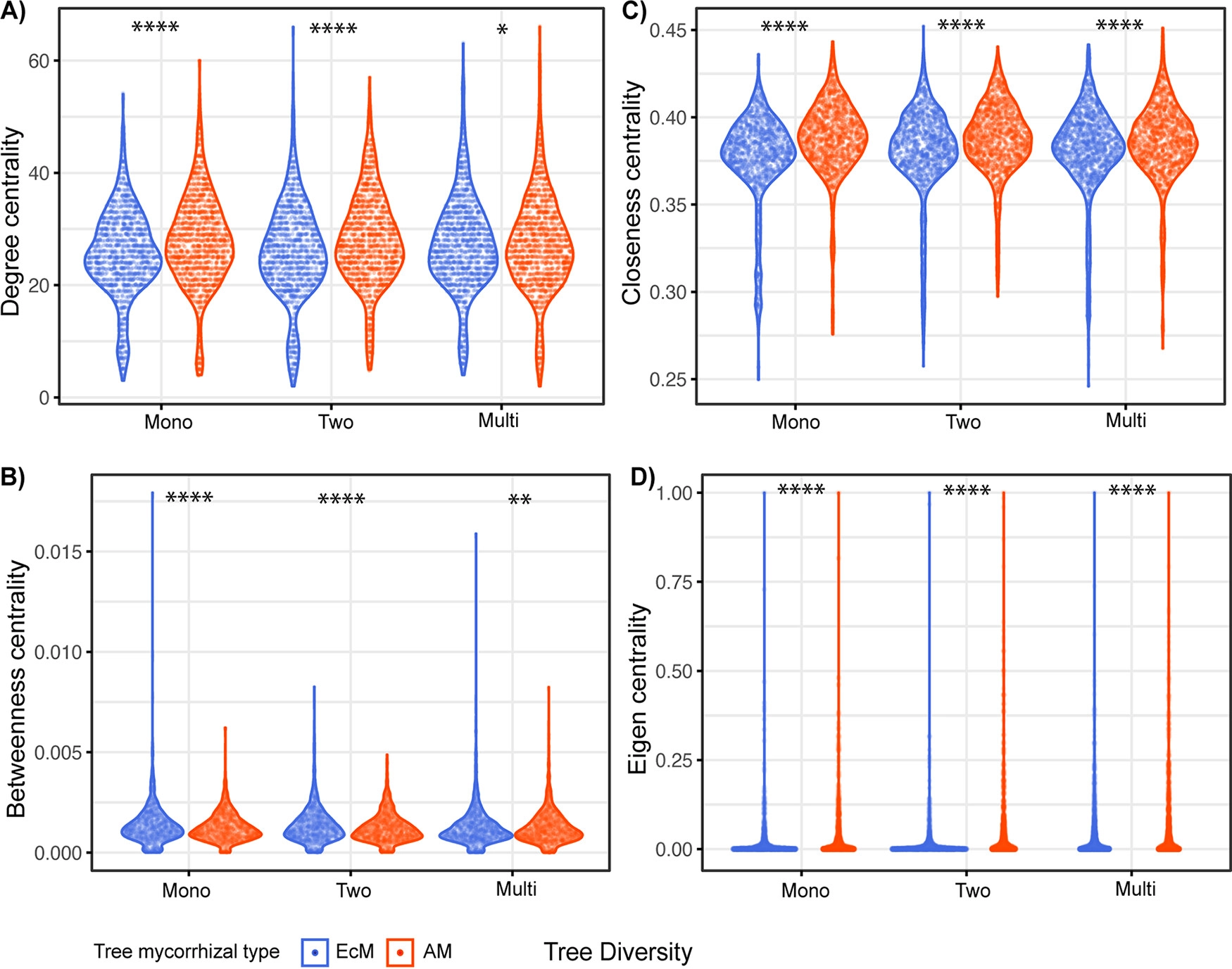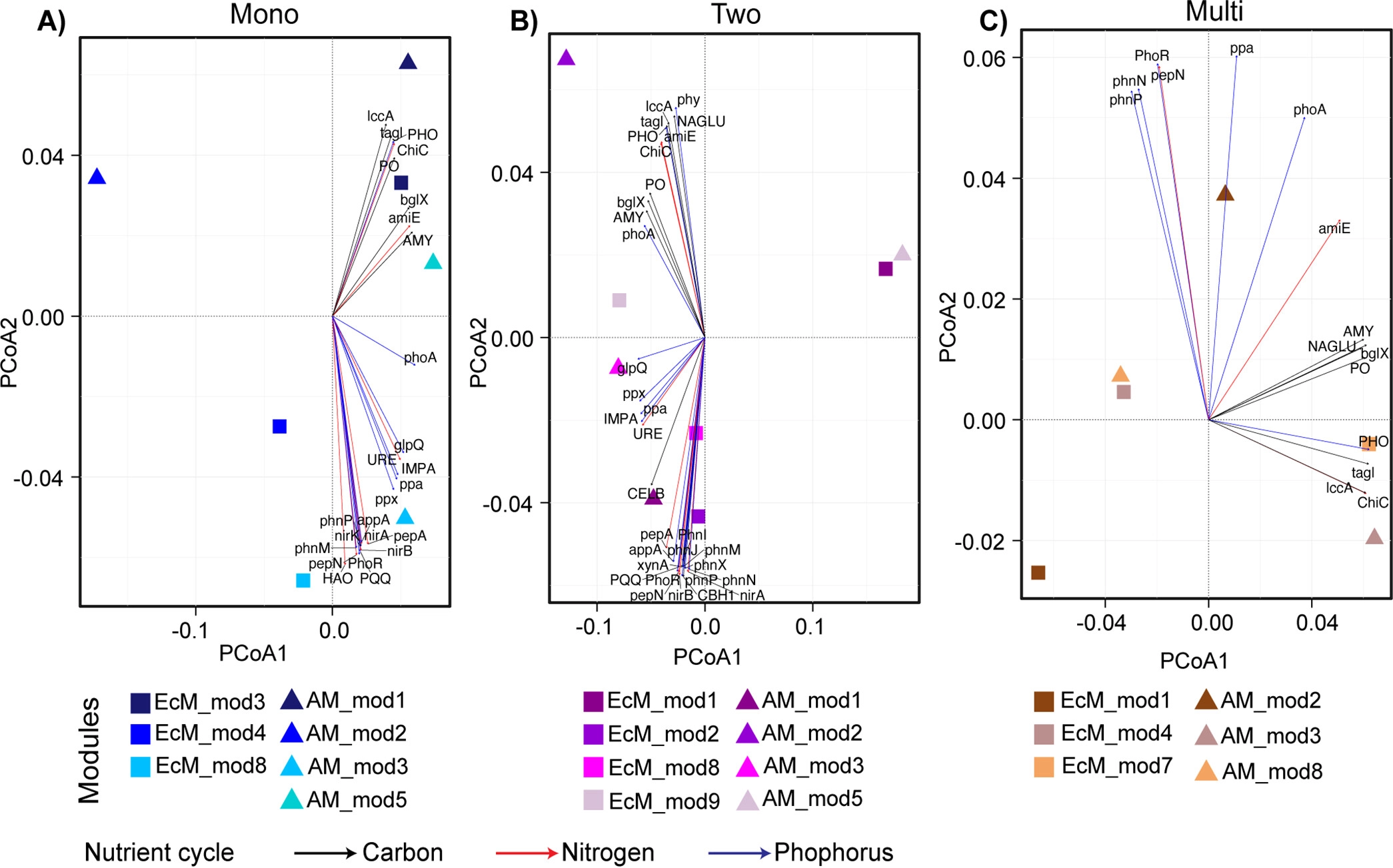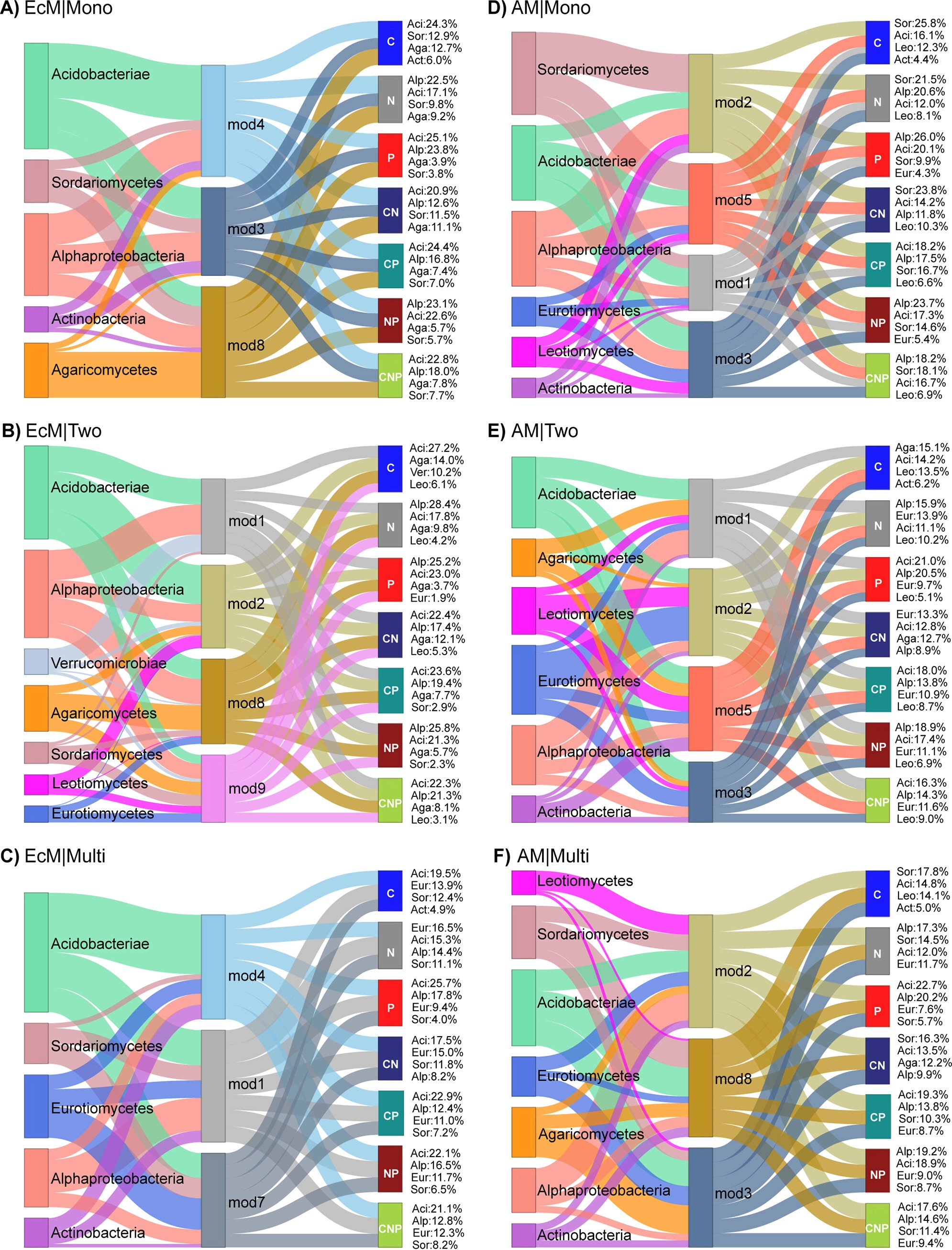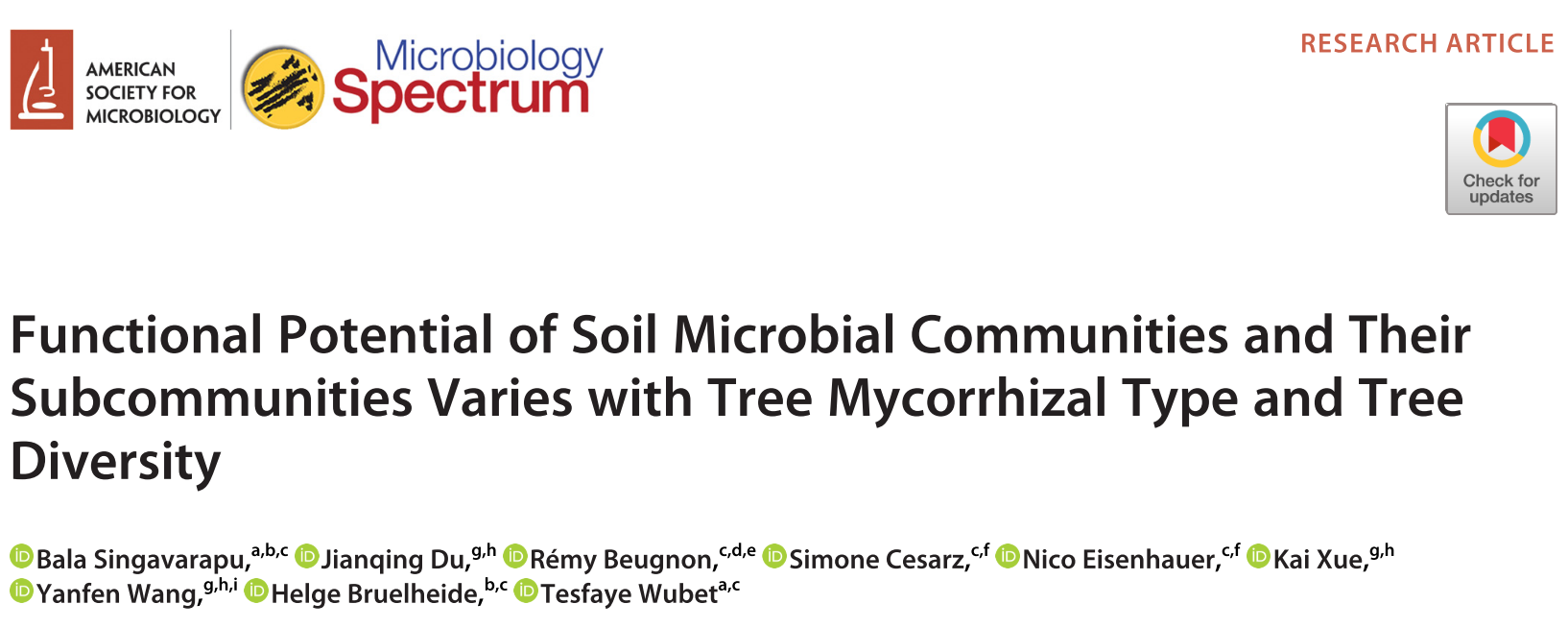Soil microbial communities play crucial roles in the earth’s biogeochemical cycles. Yet, their genomic potential for nutrient cycling in association with tree mycorrhizal type and tree-tree interactions remained unclear, especially in diverse tree communities. Here, we studied the genomic potential of soil fungi and bacteria with arbuscular (AM) and ectomycorrhizal (EcM) conspecific tree species pairs (TSPs) at three tree diversity levels in a subtropical tree diversity experiment (BEF-China). The soil fungi and bacteria of the TSPs’ interaction zone were characterized by amplicon sequencing, and their subcommunities were determined using a microbial interkingdom co-occurrence network approach. Their potential genomic functions were predicted with regard to the three major nutrients carbon (C), nitrogen (N), and phosphorus (P) and their combinations. We found the microbial subcommunities that were significantly responding to different soil characteristics. The tree mycorrhizal type significantly influenced the functional composition of these co-occurring subcommunities in monospecific stands and two-tree-species mixtures but not in mixtures with more than three tree species (here multi-tree-species mixtures). Differentiation of subcommunities was driven by differentially abundant taxa producing different sets of nutrient cycling enzymes across the tree diversity levels, predominantly enzymes of the P (n = 11 and 16) cycles, followed by the N (n =9) and C (n =9) cycles, in monospecific stands and two-tree-species mixtures, respectively. Fungi of the Agaricomycetes, Sordariomycetes, Eurotiomycetes, and Leotiomycetes and bacteria of the Verrucomicrobia, Acidobacteria, Alphaproteobacteria,and Actinobacteria were the major differential contributors (48% to 62%) to the nutrient cycling functional abundances of soil microbial communities across tree diversity levels. Our study demonstrated the versatility and significance of microbial subcommunities in different soil nutrient cycling processes of forest ecosystems.
Loss of multifunctional microbial communities can negatively affect ecosystem services, especially forest soil nutrient cycling. Therefore, exploration of the genomic potential of soil microbial communities, particularly their constituting subcommunities and taxa for nutrient cycling, is vital to get an in-depth mechanistic understanding for better management of forest soil ecosystems. This study revealed soil microbes with rich nutrient cycling potential, organized in subcommunities that are functionally resilient and abundant. Such microbial communities mainly found in multi-tree-species mixtures associated with different mycorrhizal partners can foster soil microbiome stability. A stable and functionally rich soil microbiome is involved in the cycling of nutrients, such as carbon, nitrogen, and phosphorus, and their combinations could have positive effects on ecosystem functioning, including increased forest productivity. The new findings couldbehighly relevant for afforestation and reforestation regimes, notably in the face of growing deforestation and global warming scenarios.

Fig. 1. Comparison of distribution of EcM and AM interkingdom network centrality indices along the tree diversity levels.

Fig. 2. Comparison of functional diversity of EcM and AM TSP soil microbial communities along the tree diversity levels.

Fig. 3. Principal-coordinate analysis (PCoA) of EcM and AM modules along the tree diversity levels. (A) Monospecific stands; (B) Two-tree species mixtures; (C) Multitree species mixtures.

Fig. 4. Sankey plots showing the top differentially abundant taxa from each of the EcM and AM networks along the tree diversity levels and their proportional contributions to the functional abundances. (A to C) EcM networks; (D to F) AM networks.
Literature:
Bala Singavarapu*, Jianqing Du, Rémy Beugnon, Simone Cesarz, Nico Eisenhauer, Kai Xue, Yanfen Wang, Helge Bruelheide, Tesfaye Wubet*. 2023. Functional potential of soil microbial communities and their subcommunities varies with tree mycorrhizal type and tree diversity. Microbiology spectrum. 11(2): 1-19. https://doi.org/10.1128/spectrum.04578-22.

